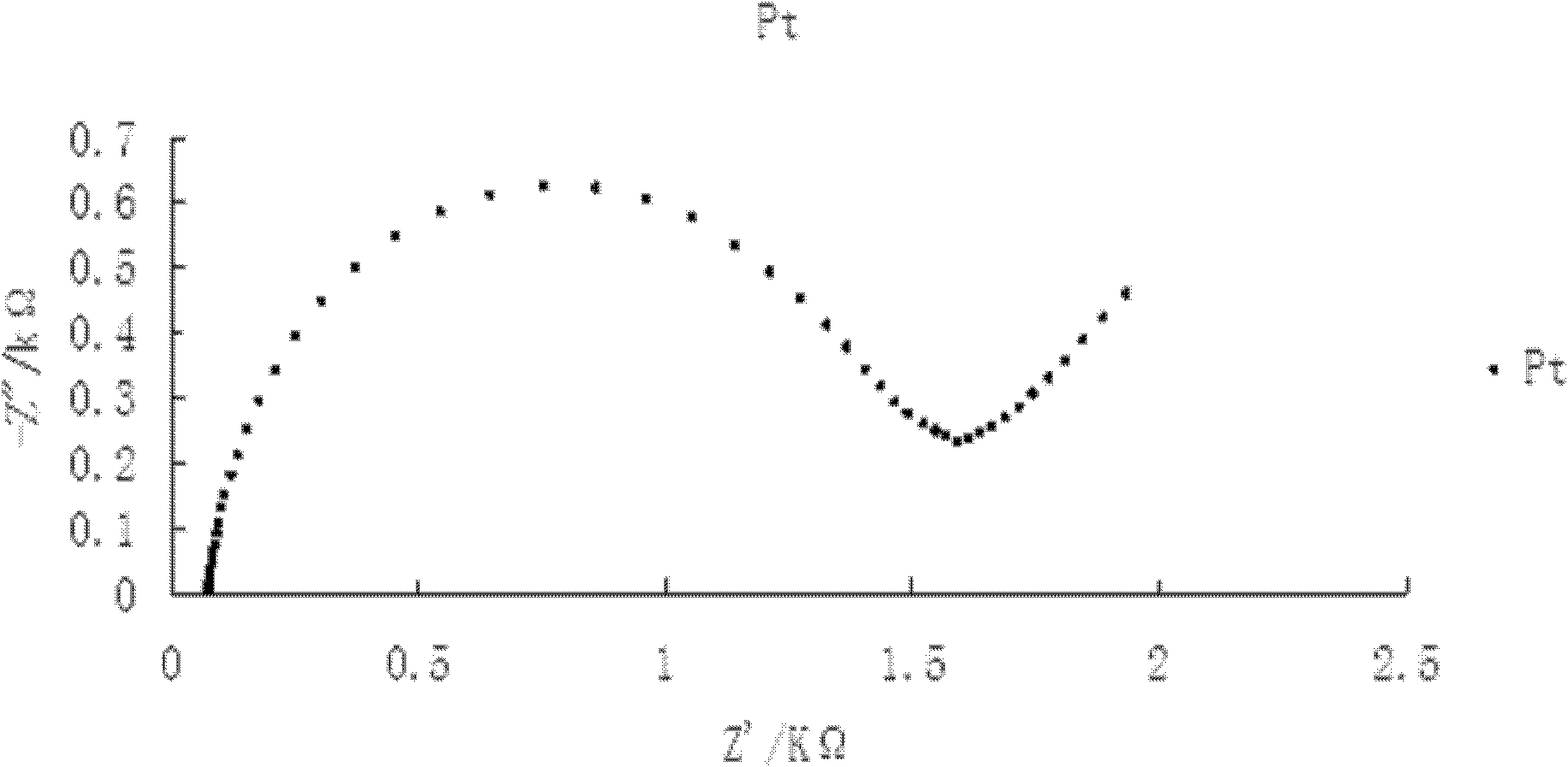Sensor for detecting penicillin in liquid
A technology of penicillin and sensors, applied in the field of biosensors, can solve problems such as prone to false positive results, high requirements for instruments, cumbersome operations, etc., and achieve the effects of improving detection sensitivity, high sensitivity, and simplifying operating procedures
- Summary
- Abstract
- Description
- Claims
- Application Information
AI Technical Summary
Problems solved by technology
Method used
Image
Examples
Embodiment 1
[0041] Prepare the sensor for detecting penicillin in liquid according to the following steps:
[0042] a. Use 1.0μm, 0.3μm, 0.05μm Al on the front end surface of the platinum disk electrode in sequence 2 o 3 The powder was polished into a mirror surface, washed with double distilled water at each step, and then the platinum disk electrodes were respectively placed in HNO 3 , anhydrous ethanol and double-distilled water for 15 minutes, and the treated electrode was dried at room temperature for later use; egg yolk lecithin and cholesterol were prepared into a BLM film-forming solution at a mass ratio of 5:2, and 5 μl of BLM film-forming solution Use a micro-sampler to drop on the surface of the cleaned electrode, keep it at room temperature for 20 minutes, and then insert the electrode into 0.1mol / L KCl solution and soak for 15 minutes to prepare the BLM-modified platinum disk electrode and the BLM-modified platinum disk The electrode is represented by Pt-BLM;
[0043] b. I...
PUM
 Login to View More
Login to View More Abstract
Description
Claims
Application Information
 Login to View More
Login to View More - Generate Ideas
- Intellectual Property
- Life Sciences
- Materials
- Tech Scout
- Unparalleled Data Quality
- Higher Quality Content
- 60% Fewer Hallucinations
Browse by: Latest US Patents, China's latest patents, Technical Efficacy Thesaurus, Application Domain, Technology Topic, Popular Technical Reports.
© 2025 PatSnap. All rights reserved.Legal|Privacy policy|Modern Slavery Act Transparency Statement|Sitemap|About US| Contact US: help@patsnap.com



